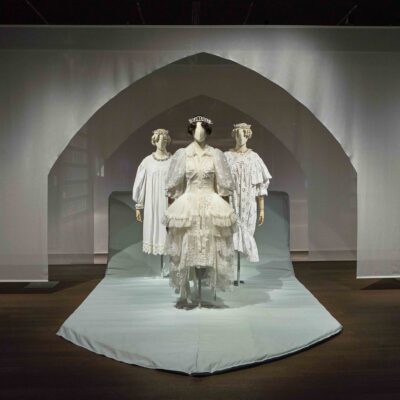
Exhibitions 21.11.2025
19.04.2022
European fashionfashion historymenswear
Wigs have a long history – they have been used since the early ages, as Sumerian, Persian, Egyptian, Greek and Roman people wore them for hygienic purposes, as part of ceremonial dress or theatrical costumes. Sometimes, in early societies, men and women used to completely shave their head and cover it with a wig to fight parasites and other diseases, but they soon became a trend and started being elaborate and detailed.
Fallen into disuse about 1000 years after the end of Roman Empire, wigs came back to popularity as a men trend through upper and middle classes at the end of the sevententh century in France; it was Louis XIV, the Sun King, who revived the trend: he started to lose his hair as a result of syphilis and hired 48 wigmakers to supply him with perukes. After him, all his court began to use wigs, a fashion that quickly spread to the rest of the European courts, all susceptible to French influence regarding fashion affairs. Following the great spread and success in the continent, the wig makers, then called “Coiffeurs”, obtained great consideration and specific guilds were founded all around Europe.
In England the trend of wearing wigs was introduced in 1660 by King Charles II, who took back the throne after a long exile in France. This trend had a fast development and became such popular through the English court, as a symbol of nobility and middle class, that since then wigs were made essentials in society and this accessory became peculiar in the dress code of professionals, high ranking officials and, of course, in the courts. Expensive wigs were usually made from human hair, but cheaper alternatives were available made of horse hair, goat hair or wool and cotton fibers.
Generally worn by men in public, to enhance and show their wealth, ‘official’ wigs used to be replaced at home by little ones, skull caps or embroidered night caps to cover the shaved head. Although the custom was for gentlemen to wear hats, they developed the habit of carrying a large feathered hat under an arm to not crush their wigs. From 1770, wigs were also extended to women, when Queen Maria Antoinette, wife of Louis XVI king of France, started to use them. As the years were going on, women wigs became higher and more sophisticated. By the mid-eighteenth century, white was the favored color for wigs, which used to be powdered with scenting rice flour, starch or Cyprus powder.
The habit of wearing wigs by aristocratic elites in polite society as a way to distinguish themselves from the other social classes ended with the French Revolution, as well as all the other symbols of ostentation and aristocratic power, which were all discarded because in strong opposition with the revolutionary beliefs.
Contemporary fashion designer appropriated of the meanings of different kinds of wigs, especially male, and used them to compliment their designs – as did Yohji Yamamoto in 1982.